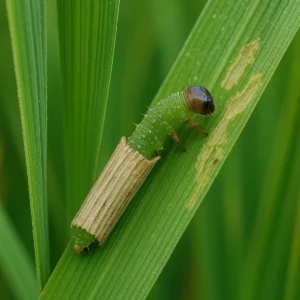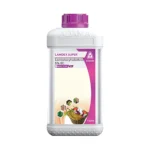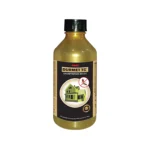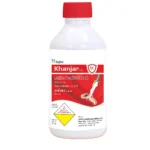Paddy Pests
Case Worm

Symptoms
- Larvae feed on green tissues of the leaves and the leaves become whitish and papery and add green one
- Tubular cases around the tillers by cutting the apical portion of leaves
- Floating of tubular cases on the water
- Cutting off leaf tips to make leaf cases
Identification
- Egg: Individual egg is circular, flattened, and measures 0.5 mm in diameter. It is light yellow and has a smooth surface. Mature eggs are darker and develop two purplish dots.
- Larva: Pale translucent green with orange head. It has filamentous gills on the sides of the body. The larvae are found hanging from the leaf and measures upto 15mm long.
- Pupa: The pupa is cream in color and about 5.5 mm long. Mature pupa is silvery white.
- Adult: Moth is small, delicate white with pale brown wavy markings. The adult moth is about 5 mm long. It is bright white with light brown and black spots.
Management
- ETL–2 FDL/hill (FDL- Fully Damaged Leaf)
- The pest is semi aquatic and hence draining is the most effective method for the management of the pest.
- Mix 400 ml of kerosene with 10 kg of sand and apply to the standing water. Dislodge the cases by passing a rope and then drain water; collect the cases and destroy.
- Maintain field and bunds weed free. Do early planting and follow wider spacing.
- Follow split fertilizer application.
- Encourage biological control agents like hydrophilid and dytiscid water beetles which feed on larvae and spiders, dragonflies, and birds which feed on adults.
- Spray any following insecticides.
|
Insecticides |
Dosage |
|---|---|
|
250ml/acre |
|
|
500ml/acre |
₹165
Select options
This product has multiple variants. The options may be chosen on the product page
₹300
Select options
This product has multiple variants. The options may be chosen on the product page
₹212
Select options
This product has multiple variants. The options may be chosen on the product page
₹250
Select options
This product has multiple variants. The options may be chosen on the product page




